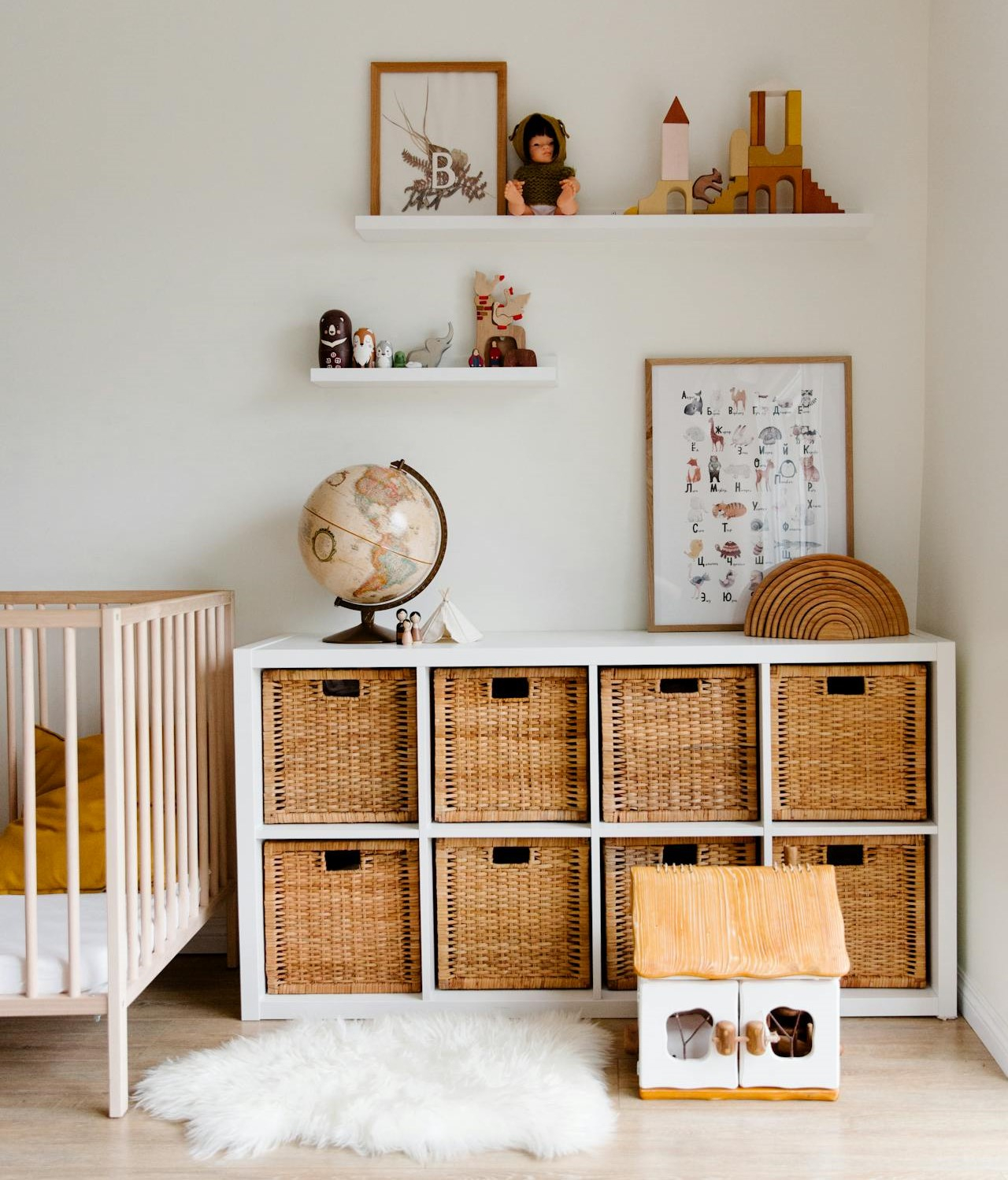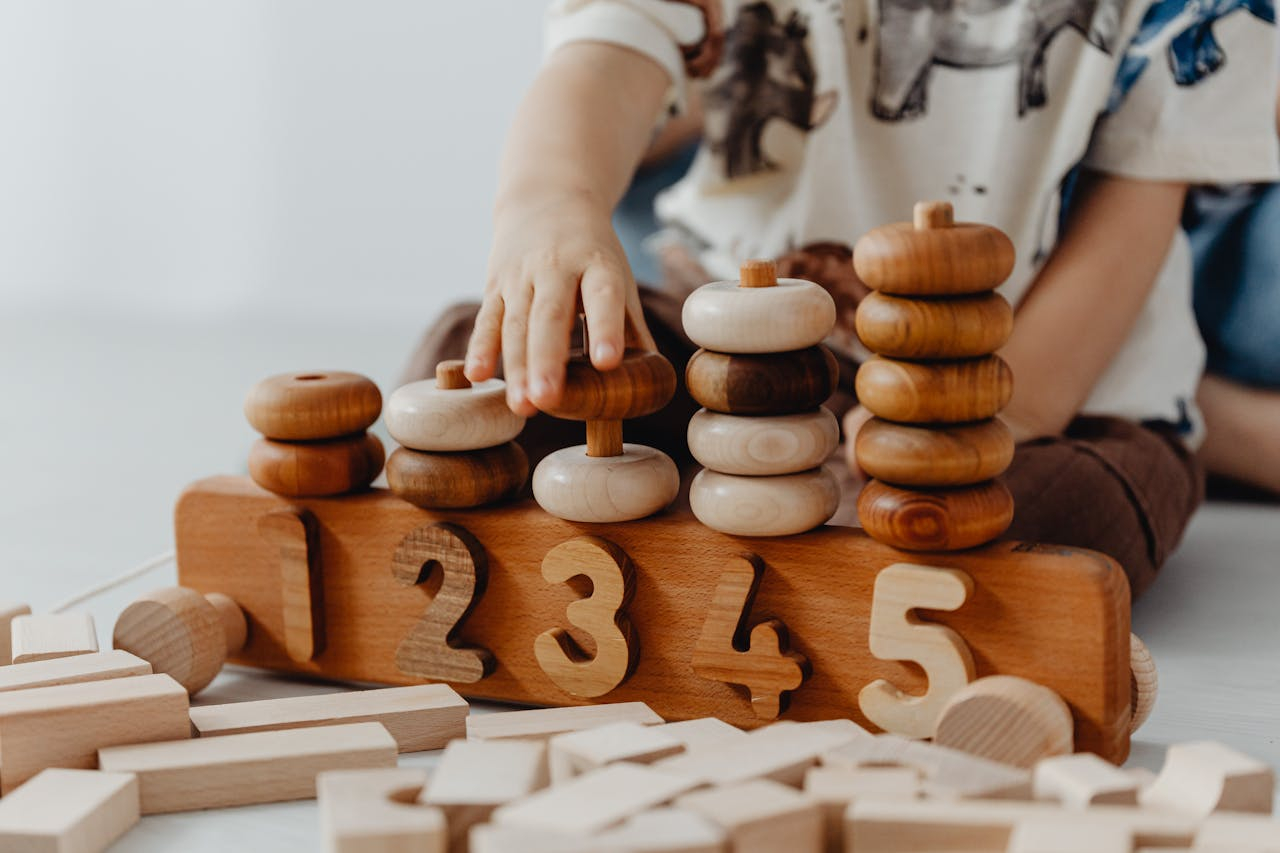If you’re a parent, chances are you’ve faced the challenge of toy clutter in your kid’s room. It starts with a few stuffed animals and cars, and before you know it, the room becomes a minefield of LEGO pieces and action figures. Keeping toys organized can feel like a never-ending battle, but it doesn’t have to be. Here’s how to achieve toy organization without losing your sanity.
Start with a Declutter Session
Before you start organizing, it’s important to clear out any toys that are no longer needed or have been outgrown. Begin by taking inventory of what’s in the room and sorting through everything. Kids tend to collect toys faster than they can use them, and many will end up forgotten at the bottom of toy bins.
Involve Your Kids
While kids may not always be eager to part with their toys, you can still make the decluttering process engaging for them. Focus on the toys they actively play with, and consider temporarily storing toys they no longer use in another area of the house. You can even frame it as a “toy rotation” system, where they get the chance to play with different toys later. This way, they don’t feel like they’re losing anything, and you avoid clutter.
Create Categories
Once the decluttering is done, group toys into categories—think action figures, puzzles, dolls, and art supplies. By categorizing the toys, you’ll have a better idea of what storage solutions will work best.
Storage Solutions That Grow with Your Kids
As your child grows, so do their toys—and storage needs. Investing in versatile and adjustable storage solutions is a smart move that will serve you for years. Here are some great options:
1. Cube Shelving Units
Cube organizers are a lifesaver for any kid’s room. They’re modular, versatile, and can fit almost anywhere. Opt for bins or baskets that fit inside the cubes to keep small toys and loose items contained. The best part? As your child grows, these cube units can transition from toy storage to book or art supply storage.
2. Under-the-Bed Storage
When you’re running low on floor space, under-the-bed storage is a game-changer. Sliding bins, roll-out drawers, or even flat storage containers can hold everything from board games to craft supplies. This hidden storage option is perfect for keeping less-used toys out of sight but easily accessible when needed.
3. Wall-Mounted Storage
Vertical space is often overlooked, but it can be a valuable area for storage. Install floating shelves to store books, display collections, or hold small storage bins for items like action figures and cars. Pegboards are another great wall storage option. They allow you to hang baskets, shelves, or hooks, making it easy to adjust as your child’s interests change.
4. Multi-Functional Furniture
Furniture that doubles as storage is a must for any small room. Look for ottomans that open up to store toys, or a bench with hidden compartments under the seat. Beds with built-in drawers are also a fantastic solution for storing larger toys or even extra bedding and clothes.
Fun and Creative Storage Ideas
Kids’ rooms should feel playful and imaginative, and their storage solutions can reflect that. Here are some creative ideas that make organizing fun:
5. Toy Hammocks
For stuffed animals and soft toys, consider a toy hammock. These stretchy nets are hung in the corner of the room, providing an easy and decorative way to store plush toys. Not only do they free up floor space, but they also keep your child’s favorite toys on display.
6. Chalkboard Bins
Get your child involved in labeling their own storage bins by using chalkboard paint. Simply paint the front of a plastic or wooden bin and let them write or draw what belongs inside. It’s not only a fun activity but also a useful way to teach responsibility and help them remember where everything goes.
7. Color-Coded Storage
For younger kids, color-coding storage bins or shelves can make clean-up time more fun. Assign different colors for different types of toys—blue for cars, green for dolls, yellow for blocks—and watch how excited your child gets to put things away in their designated spot.
8. Over-the-Door Organizers
Over-the-door organizers with pockets are great for holding small toys like action figures, cars, or art supplies. Hang one on the back of the bedroom door or closet door for an instant space-saver.

Organizational Strategies That Stick
Having great storage solutions is only half the battle—you’ll also need strategies to keep the organization going long-term. Here’s how to help make tidying up a habit, not a hassle.
9. Create a Clean-Up Routine
Set a specific time every day for clean-up, like right before dinner or bedtime. Consistency is key. By making it part of the daily routine, it will eventually become second nature for your child. You can even turn it into a game by setting a timer and seeing how quickly they can put everything away.
10. Label Everything
Labeling bins, drawers, and shelves is a simple way to keep things organized. You can use words or pictures depending on your child’s age. This visual reminder will make it easier for kids to know where things go and help them maintain the system you’ve created.
11. Limit the Number of Toys Available
Rotating toys can reduce the amount of clutter while keeping things fresh for your child. Store half of their toys in a closet or another room and swap them out every few weeks. This not only keeps the room tidy but also makes old toys feel new again.
Creating Zones for Different Activities
Kids don’t just play in their rooms—they read, do homework, and sometimes even create art projects. Creating specific zones within their room can help keep activities organized and reduce clutter.
12. The Art Station
Designate a specific area for art supplies with a small desk or table. Use bins, shelves, or a rolling cart to store markers, crayons, coloring books, and craft supplies. A pegboard above the desk can hold scissors, glue, and other small items. Having all the supplies in one place makes it easier for kids to focus and keeps the rest of the room free from craft chaos.
13. The Reading Nook
If your child loves reading, carve out a cozy reading nook with a comfy chair, beanbag, or even a tent. Keep a small bookshelf or storage baskets nearby for easy access to their favorite books. A well-defined reading area encourages quiet time and keeps books from getting scattered throughout the room.
14. The Play Area
Designate a specific part of the room for playtime. Whether it’s a rug in the corner or a play mat, having a defined area for toys helps contain the mess. Add a nearby toy box or set of bins for easy clean-up.


